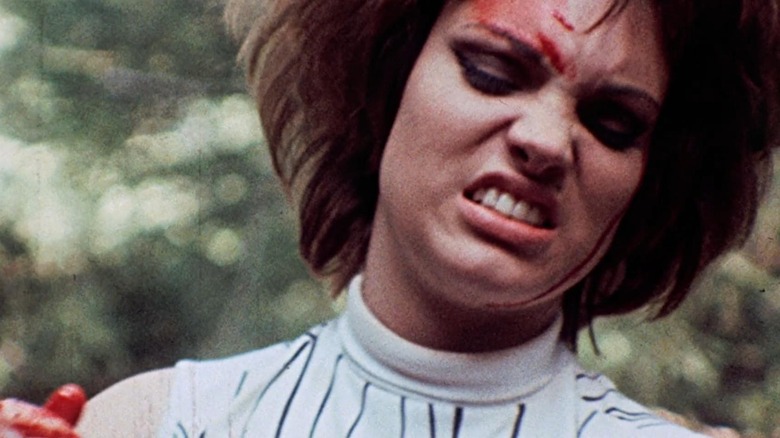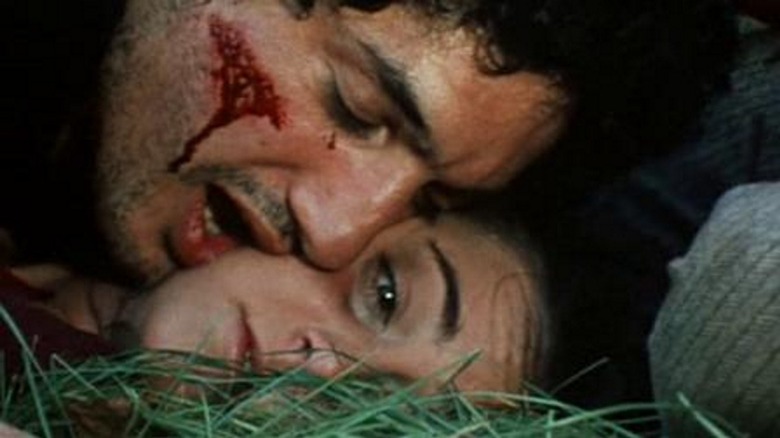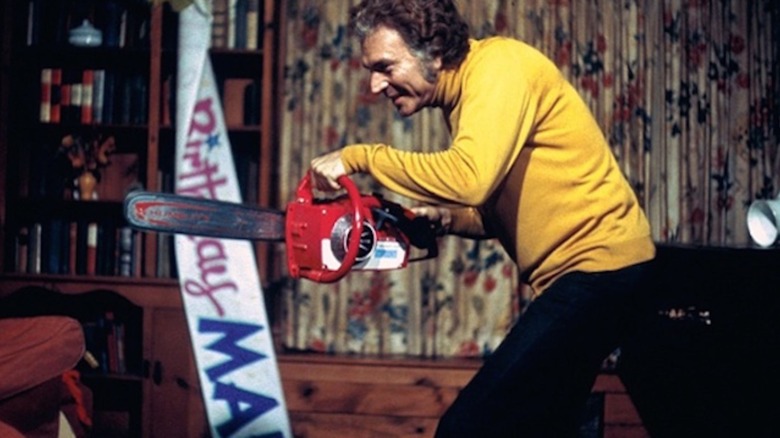The Last House On The Left Controversy Explained
Wes Craven is an undeniable master of horror, having terrified the world with his creation, "A Nightmare on Elm Street," only to completely subvert the slasher genre he helped perfect and kickstart a new generation's love of horror with "Scream." With no exaggeration, horror today would not exist as it does today if it weren't for the brilliance of Wes Craven. There's no question that bringing Freddy Krueger and Ghostface into the horror canon is what Craven is most known for, but his filmography also includes horror favorites like "The Hills Have Eyes," "Deadly Blessing," "The Serpent and the Rainbow," "Shocker," "Cursed," "Red Eye," "Swamp Thing," Vampire of Brooklyn," and "The People Under the Stairs." However, this incredible legacy and this genre-shaping career almost didn't happen, all because of Craven's first and most notorious film, "The Last House on the Left."
Released in 1972, just a few years after the conservative, bigoted Hays Code was finally abandoned by film production studios, the up-and-coming Craven wanted to create a film to make commentary on the bombardment of graphic depictions of violence in the media during the Vietnam War. His intention was to make a visually appalling exploitation film with graphic depictions of rape and ultra-violence to highlight the similarities of what was being depicted on the news every day. Unfortunately, Craven's message was misunderstood by many, and the reaction to the film almost ended his career before it had a chance to begin.
Depiction is Not Endorsement
"The Last House on the Left" was inspired by Ingmar Bergman's "The Virgin Spring," with a story about two young women who are kidnapped, raped, and murdered by a trio of escaped criminals. Following the attack, the three show up at a house pretending to be salespeople, not realizing that the house they're at belongs to the parents of one of the girls they just murdered. The parents inevitably figure out who the salespeople actually are, and torture them in an act of revenge. The film was never released in Australia due to censorship issues and was banned in the U.K., projectionists were known for cutting out full chunks of the film reel, there are tons of stories about audiences fainting/walking out/vomiting during screenings, and some audiences even demanded that theaters destroy their copies of the film.
The reaction shook Craven, who didn't understand why people were so upset, until he realized that a lot of people thought the film was championing rape and murder, rather than condemning it. Despite the backlash, "The Last House on the Left" was a success, due in large part to audiences wanting to see the notorious film for themselves. With what looked like a hit on paper, Craven attempted to use the film's success as a way to get other films in production, but the controversy surrounding the film scared off investors for serious fare, and attracted those who wanted more exploitation. His inability to make a non-horror project is what led to the creation of "The Hills Have Eyes," and solidified his reputation as a horror director.
One Person's Trigger is Another's Therapy
Even today, the discourse surrounding films like "The Last House on the Left" rages on. As an extremely vocal survivor of multiple participant rape, I've spent a lot of my career analyzing the way rape and sexual assault is depected in the art of film, and I've heard every possible defense and criticsm imaginable. Here's the thing: every single person is going to be impacted by the depictions in film differently. It's extremely important to hear from a variety of perspectives and experiences, as survivors are not a monolith. All of us who have endured the horrific events portrayed in a film like "The Last House on the Left" cannot be expected to respond the same way, and if anything, assuming that all of us would or should respond the same way is far more offensive than bad representation.
When "The Last House on the Left" was remade in 2009, a lot of people sought out the original film for the first time and many were struck by the film's uneven tone, random acts of humor, and mean-spirited depictions of violence, with plenty completely ignoring the context of the film's release. Casual depictions of cruelty combined with cheap attempts at humor feels like the tagline for any news broadcast, which proves the point Craven was trying to make. An academic at heart, Craven's films were always trying to say something, but the unfortunate reality is that "The Last House on the Left" was and remains to be his most misunderstood work.


